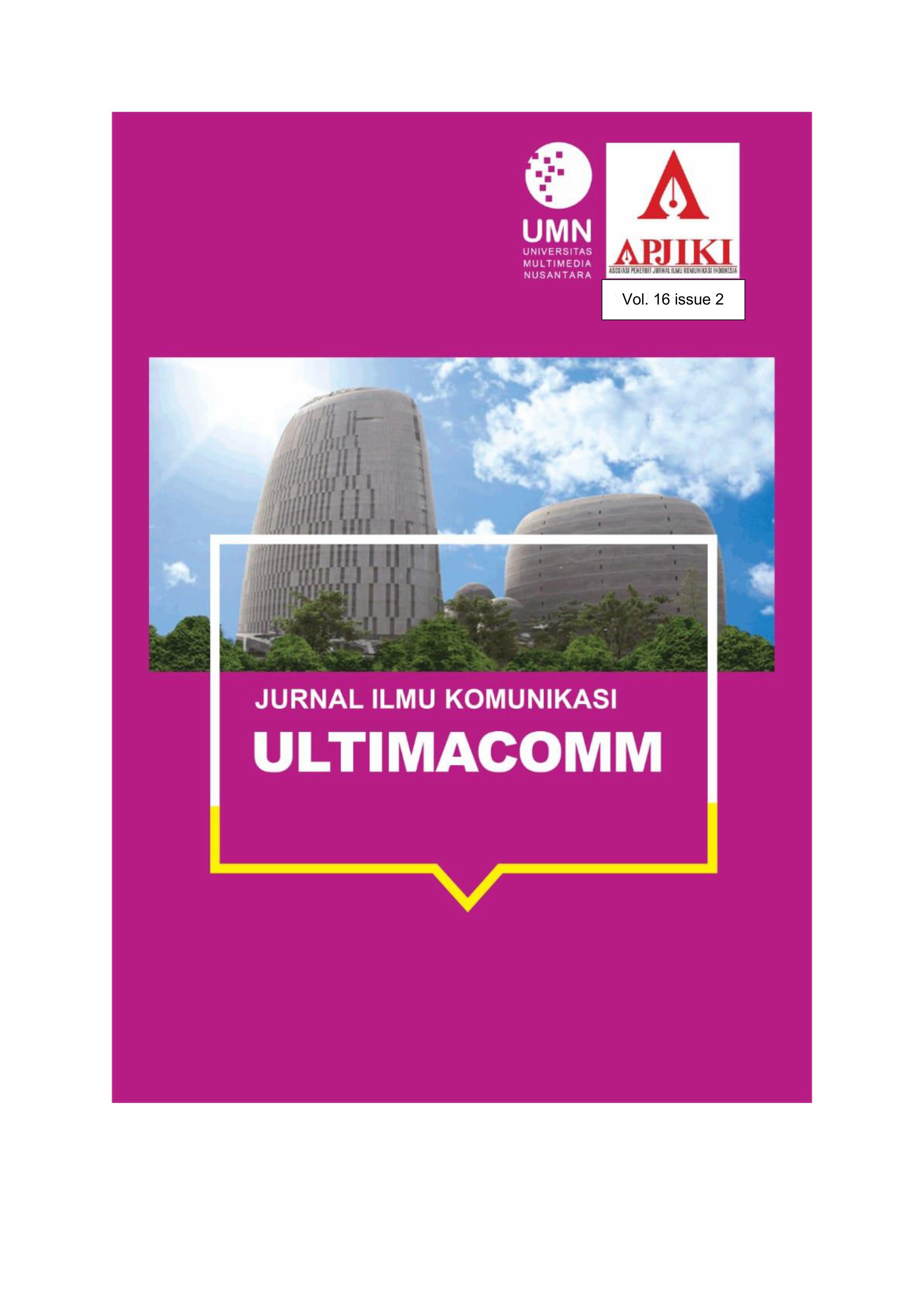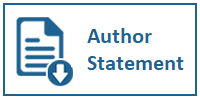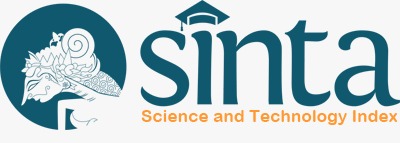Communication Transformation: The Role of AI in Digital Public Relations Across Industries
Keywords:
Artificial Intelligence, Digital Public Relations, Cross-Industry Communication, Audience Engagement, Ethical AI IntegrationAbstract
Artificial Intelligence (AI) in the world of Digital Public Relations (PR) is revolutionizing communication strategies across various industries, including manufacturing, healthcare, and finance, offering more personalized and efficient methods of communication. This research aims to explore the transformative potential of AI in the world of Public Relations (PR), with a focus on its impact on communication strategies, audience engagement, and content creation. This research uses the diffusion of innovation theory to analyze the adoption and utilization of AI technology in various sectors. Using a qualitative approach, this study adopts literature review and library research methods to analyze existing studies, reports, and practice case examples to provide in-depth insights into the application of AI in communication practices. The findings of this study show that AI improves data analysis capabilities, enables more targeted communication strategies, improves customer experience by providing personalized communication and 24/7 support through chatbots and virtual assistants and improves operational efficiency. The study highlights the importance of ethical use of AI and the development of digital skills to be able to fully harness the potential of AI in PR. The study contributes by offering a comprehensive understanding of the role of AI in transforming PR practices, providing insights for practitioners and policymakers on integrating AI into communication strategies. The integration of AI in PR highlights the transformative potential of AI in digital PR and the need to create rules and guidelines to ensure AI is used ethically and responsibly in PR. Also, there needs to be more research on exploring the impact of AI on communication ethics and developing a framework to ensure effective AI integration in PR.
Downloads
References
Adriantini, D. N., Toyo, T. R., Tunnisa, T., Fitri, N., Kharisma, W., & Burhan, M. R. (2024). Public Relations Strategy in the Digital Era in the Midst of the Development of AI. Journal of Communication and Socio-Political Sciences, 2(2), 295–298. http://jurnal.ittc.web.id/index.php/jiksp/article/view/1822
Ala'raj, M., & Abbod, M. F. (2016). Classifiers consensus system approach for credit scoring.
Knowledge-Based Systems, 104, 89–105
Alajlan, A. (2024). The Role of Digital Public Relations in Managing Corporate Crises in the Digital Age: An Applied Study on Startups in the Kingdom. https://doi.org/10.59992/ijfaes.2024.v3n10p27
Alfiansyah, I., & Anshori, I. (2024). Social networks: the transformation of communication in the digital age. Sosfilkom: Journal of Social, Philosophy and Communication. https://doi.org/10.32534/jsfk.v18i1.4333
Alekseyenko, L. N., Tulai, O., & Babii, S. (n.d.). Financial sector: regulatory and communication transformations in the digital economy. Economic Analysis. https://doi.org/10.35774/econa2023.03.222
Anderson, M., West, S., Romero, D., & Harrison, D. K. (2023). Communicating the Value of Digital Transformation Within Manufacturing Firms (pp. 13–21). Springer International Publishing. https://doi.org/10.1007/978-3-031-36698-7_2
Ardan, M., Rahman, F. F., Noorbaya, S., Alameka, F., & Johan, H. (2024). Transforming midwifery healthcare services in rural Indonesia: A comprehensive analysis of artificial intelligence integration. Journal of Infrastructure, Policy and Development, 8(10). https://doi.org/10.24294/jipd.v8i10.7944
Aslanova, A. (2024). Brand wheel or the specifics of evaluating the effectiveness of an organization's pr activities. https://doi.org/10.36078/1730107383
CETULEAN, M., & STOIAN, M. (2024). The Evolution of Business Communication in the Digital Age. https://doi.org/10.24818/icess/2024/073
Figueiredo, A. J., Thomé, A. F. V. H., Bubolz, F., Santos, H. G. D., Menin, J. D., Cardoso, L., Santos, M. C. F. dos, Costa, M. M. M., Luzardo, M. D., Natividade, P. R. O. da, Costa, R. M. da, & Gomes, S. (2024). Desafios e oportunidades da comunicaçí£o na sociedade digital. https://doi.org/10.69849/revistaft/ni10202410222032
Girasa, R. (2020). AI as a Disruptive Technology (pp. 3–21). Palgrave Macmillan, Cham. https://doi.org/10.1007/978-3-030-35975-1_1
Gupta, R., Biswas, D. K., Ronty, A. P., Kapali, S., & Khan, M. S. (2024). Empowering Digital Transformation: The Strategic Role of Artificial Intelligence in Enterprise Innovation. European Journal of Theoretical and Applied Sciences, 2(6), 210–218. https://doi.org/10.59324/ejtas.2024.2(6).16
Han, Y. (2024). The Impact of Digital Media on Language Styles and Communication Methods Based on Text, Image, and Video Forms. Lecture Notes in Education, Psychology, and Public Media. https://doi.org/10.54254/2753-7048/40/20240754
Intani, A. A., & Annisa, F. (2024). Legal Analysis of Artificial Intelligence Technology Development in Healthcare Industry in Indonesia. 1(1), 1–19. https://doi.org/10.22146/seajalgov.v1i1.10155
Mustikaningsih, M., & Fahrudin, A. (2024). Challenges and Opportunities of the PR World in the Age of Artificial Intelligence: A Literature Review. 7(1), 99–110. https://doi.org/10.31949/jika.v7i1.10145
Mogaji, E., Dawes Farquhar, J., Van Esch, P., Durodié, C., & Perez-Vega, R. (2022). Guest editorial: Artificial intelligence in financial services marketing. International Journal of Bank Marketing, 40(6), 1097–1101. https://doi.org/10.1108/ijbm-09-2022-617
Nesterenko, V. G., Miśkiewicz, R., & Abazov, R. (2023). Marketing Communications in the Era of Digital Transformation. Virtual Economics. https://doi.org/10.34021/ve.2023.06.01(4)
Oladele, T. C. (2024). Digital Transformation in Finance and Banking Sectors (pp. 23–38). https://doi.org/10.1007/978-3-031-52403-5_3
Putri, I. M., & Qurniawati, E. F. (2024). TRANSFORMATION OF ETHICS AND PUBLIC RELATIONS STRATEGIES IN THE ERA OF ARTIFICIAL INTELLIGENCE. Journal of Communication Sciences UHO: Research Journal of Communication and Information Science Studies, 9(2), 375–387. https://doi.org/https://doi.org/10.52423/jikuho.v9i2.201
Rahma, F. A. (2024). Public Relations Strategy in Optimizing Digital Influence. 1(2), 55–64. https://doi.org/10.62383/misterius.v1i2.120
Revolutionizing Industries: The Impact of Artificial Intelligence Applications. (2024). https://doi.org/10.62919/hjdgh2651
Song, M., Elson, J., & Bastola, D. (2024). A Review of Digital Age Transformation in the Past 25 Years (1999-2024): Enhancing Patient-Physician Health Communication Model through Patient Empowerment for Effective Shared Decision-making (Preprint). https://doi.org/10.2196/preprints.60512
Susilo, A., & Ridaryanthi, M. (2023). Digital Public Relations Program Management to Improving Customer Service Quality. 13–25. https://doi.org/10.59260/pcommu.2023.13253006
Tseng, C.-C. (2003). Comparing AI systems for stock portfolio selection. The 9thInternational Conference of Computing in Economics and Finance, Vol. 1(1), pp. 1–7.
Udeh, E. O., Amajuoyi, P., Adeusi, K. B., & Scott, A. O. (2024). AI-Enhanced Fintech communication: Leveraging Chatbots and NLP for efficient banking support. https://doi.org/10.51594/ijmer.v6i6.1164
Wahyudi, R., Nurfaiza, U., & Imsani, F. (2024). Digital Public Relations Strategy for Promoting E-Filing Services to Enhance Public Service at the Pratama Tulungagung Tax Office. Deleted Journal, 1(3), 165–177. https://doi.org/10.62569/fijc.v1i3.52
Weng, Y., Wu, J., Kelly, T., & Johnson, W. (2024). Comprehensive Overview of Artificial Intelligence Applications in Modern Industries. https://doi.org/10.20944/preprints202409.1638.v1
Downloads
Published
How to Cite
Issue
Section
License
Copyright (c) 2025 Olivia Ridheta Citrawijaya

This work is licensed under a Creative Commons Attribution-NonCommercial-ShareAlike 4.0 International License.
Ultimacomm Jurnal Ilmu Komunikasi allows readers to read, download, copy, distribute, print, search, or link to its articles' full texts and allows readers to use them for any other lawful purpose. The journal allows the author(s) to hold the copyright without restrictions. Finally, the journal allows the author(s) to retain publishing rights without restrictions
1. Authors are allowed to archive their submitted article in an open access repository
2. Authors are allowed to archive the final published article in an open access repository with an acknowledgment of its initial publication in this journal















